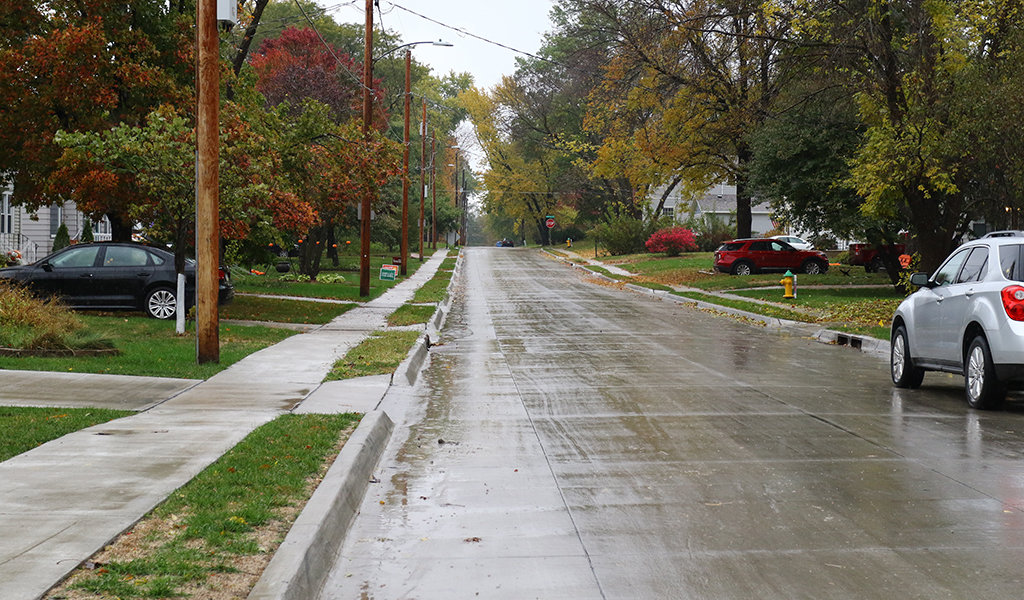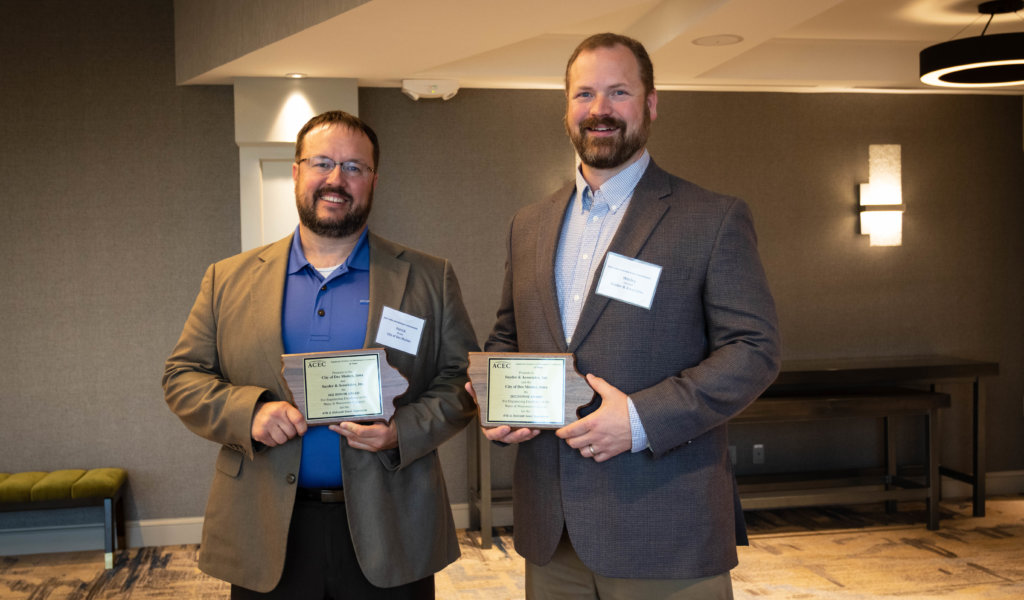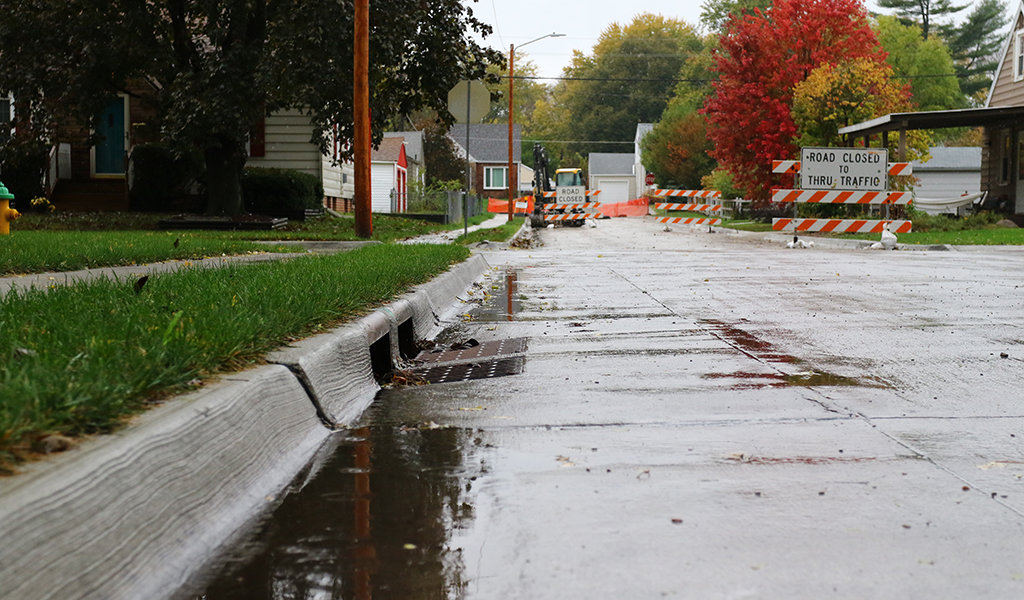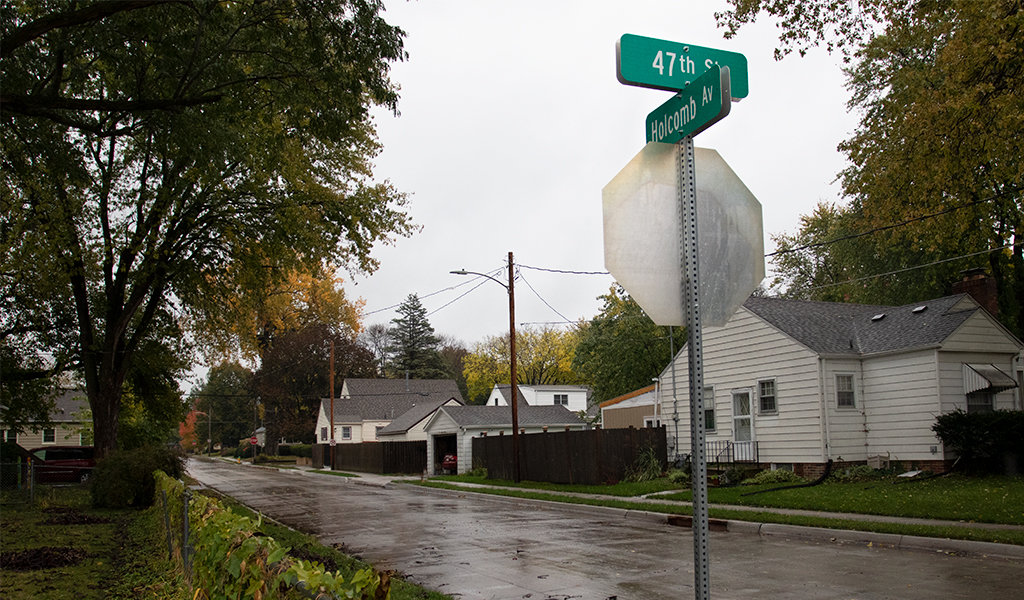
Recurring Localized Flooding Plagues Neighborhood
Homeowners near the intersection of 47th Street and Holcomb Avenue in Des Moines are no strangers to repeated localized flooding. This issue has plagued the Beaverdale neighborhood for decades, mainly because of the existing undersized stormwater conveyance system and the area’s low-lying nature.
After significant flooding occurred in 2018, city leaders contacted the Snyder & Associates team to put together a plan for stopping these recurring flood events. Our team was intimately familiar with the area after assisting the city in developing a long-term mitigation plan for the Closes Creek Watershed. Our team and city officials worked to create cost-effective solutions for the area’s flooding that would also coincide with planned future infrastructure.
Accelerated Timeframe for Stormwater Master Plan
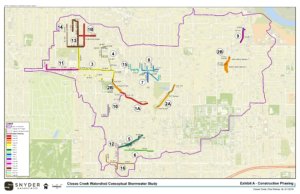
The Closes Creek Watershed is undergoing stormwater projects with the 47th and Holcomb intersection improvements.
Fast-forward to January 2000, when the City of Des Moines retained the services of Snyder & Associates to complete a comprehensive review of the Closes Creek drainage basin. This study included an examination of the stormwater conveyance facilities within the basin and an evaluation of existing deficiencies. In time, this master plan would extend storm sewers through this drainage area, which could handle large rain events.
However, the 47th and Holcomb location sits at the farthest reach of the planned work in the Closes Creek Watershed, which left the possibility of years of potential flood damage before improvements would benefit the area. Because of this, the City of Des Moines agreed to accelerate storm sewer improvements in this critical area where pipes weren’t big enough to handle the more frequent and intense storms.
Real-Life Modeling Leads to Right-Sized Solutions
Gaining a complete understanding of the current stormwater systems in place was the first step toward making improvements. Our team used an XPSWMM hydraulic model throughout this process to produce anticipated flood elevations within streets and between homes. This type of modeling proved invaluable when presenting solutions to the public and city staff as it clearly illustrates the comprehensive plans to alleviate flooding. In addition, multiple scenarios of various configurations and extents were developed and evaluated regarding their impacts on flooding. This provided a balance of costs and benefits for consideration when establishing the criteria and parameters of the project.
Creative Stormwater Design to Overcome Challenges
Ultimately, our team held several workshops with city staff to help develop a solution that involved installing a large box culvert near 47th and Holcomb. This underground feature provides increased conveyance while storing stormwater during significant rain events. The stored water can then be released slowly into the existing undersized storm sewer without flooding the street. Once future mitigation plans are installed, this solution provides immediate benefits in reducing street flooding, increased redundancy, and peak flow reductions downstream for more significant storm events.
During the design of this project, our team encountered several challenges. Since the residential project corridor had a narrow 40-foot-wide right-of-way, our project team had to accommodate the everyday activities of residents and the construction work in these tight quarters. We devised a meticulous staging plan to accomplish this, making the transition and construction process as smooth as possible.
Additionally, due to the shallow nature of the corridor’s utilities, conflicts with sanitary sewer, water mains, and gas mains were a primary concern. Our team accommodated every obstruction through careful field investigations, planning, and coordinated relocations, ensuring every piece of infrastructure had clearance and approval before work began.
This video has been posted with permission from the City of Des Moines.
Public Inclusion in Project Decision-Making
Community involvement throughout the process was crucial in developing accurate model calibrations and watershed improvements. Valuable input was gathered through public meetings and local resource groups, and a questionnaire was sent to households in flood-prone areas.
These opportunities allowed residents to voice their concerns about their neighborhood and give a sense of direct involvement with the recommended improvements. Hundreds of local voices contributed to the process via these outreach efforts. The groundwork laid during the public involvement process, coupled with the detailed, prioritized construction sequencing, has allowed for a seamless transition into the construction of the recommended stormwater improvements.
This box culvert project at the intersection of 47th and Holcomb is only part of the city’s comprehensive plan. After the historic floods in 2018, the city pledged to spend over $145 million on stormwater improvements across the metro, tripling their investment in stormwater projects conducted in the past decade. Since the 47th and Holcomb improvements were completed, larger-than-average rainstorms have occurred. Residents have reported them to be much less impactful than they would have expected in past years, with no localized flood events recorded, and they look forward to a flood-free future.
